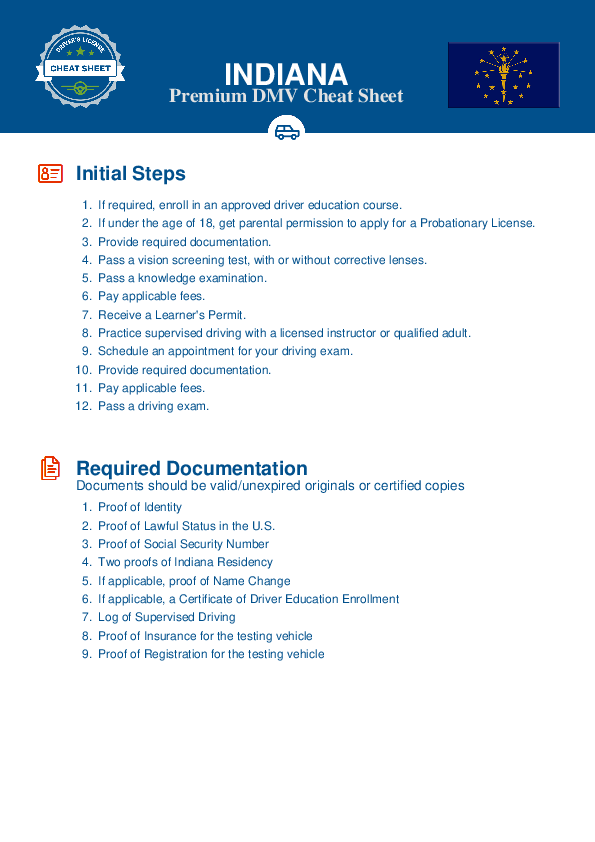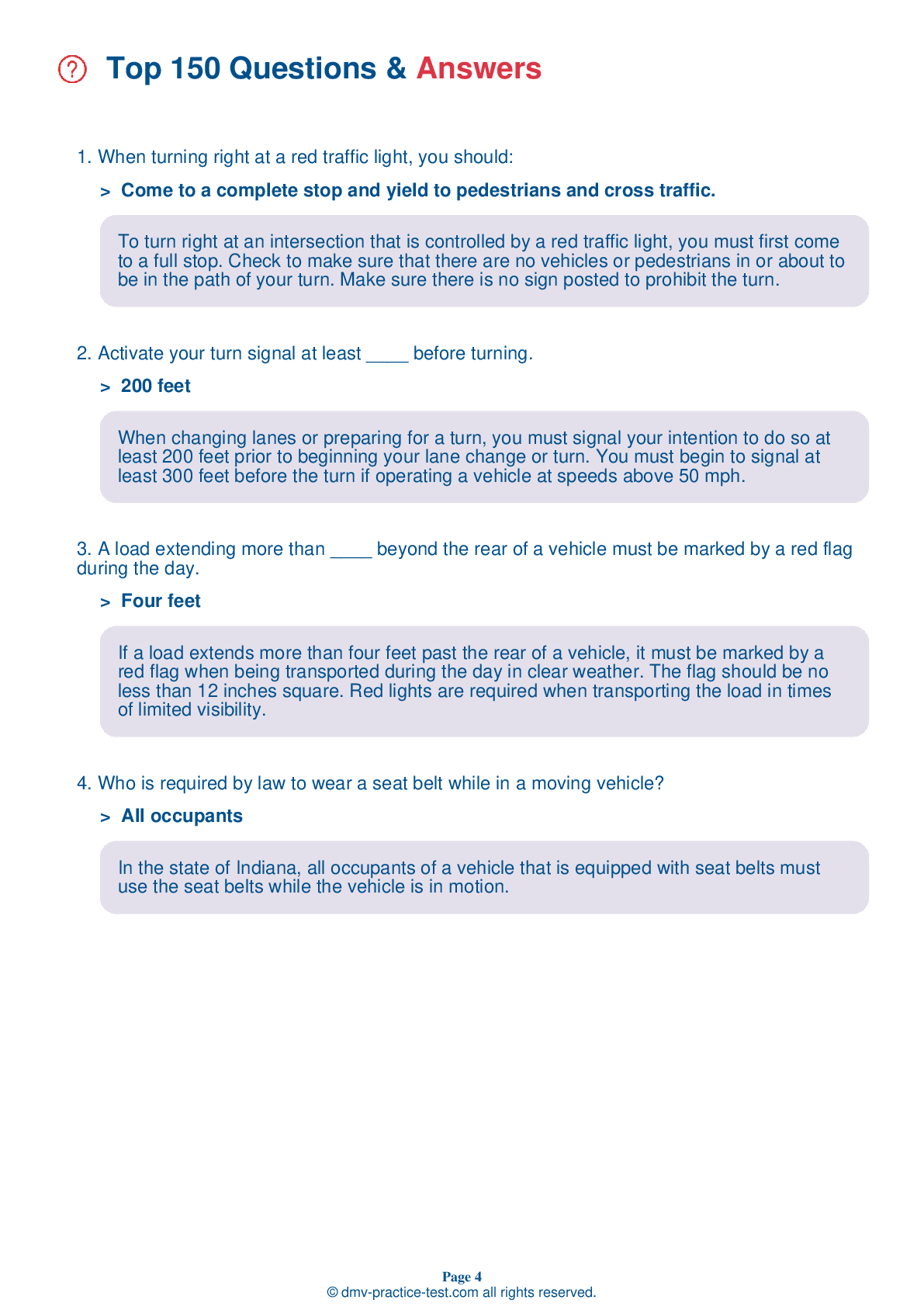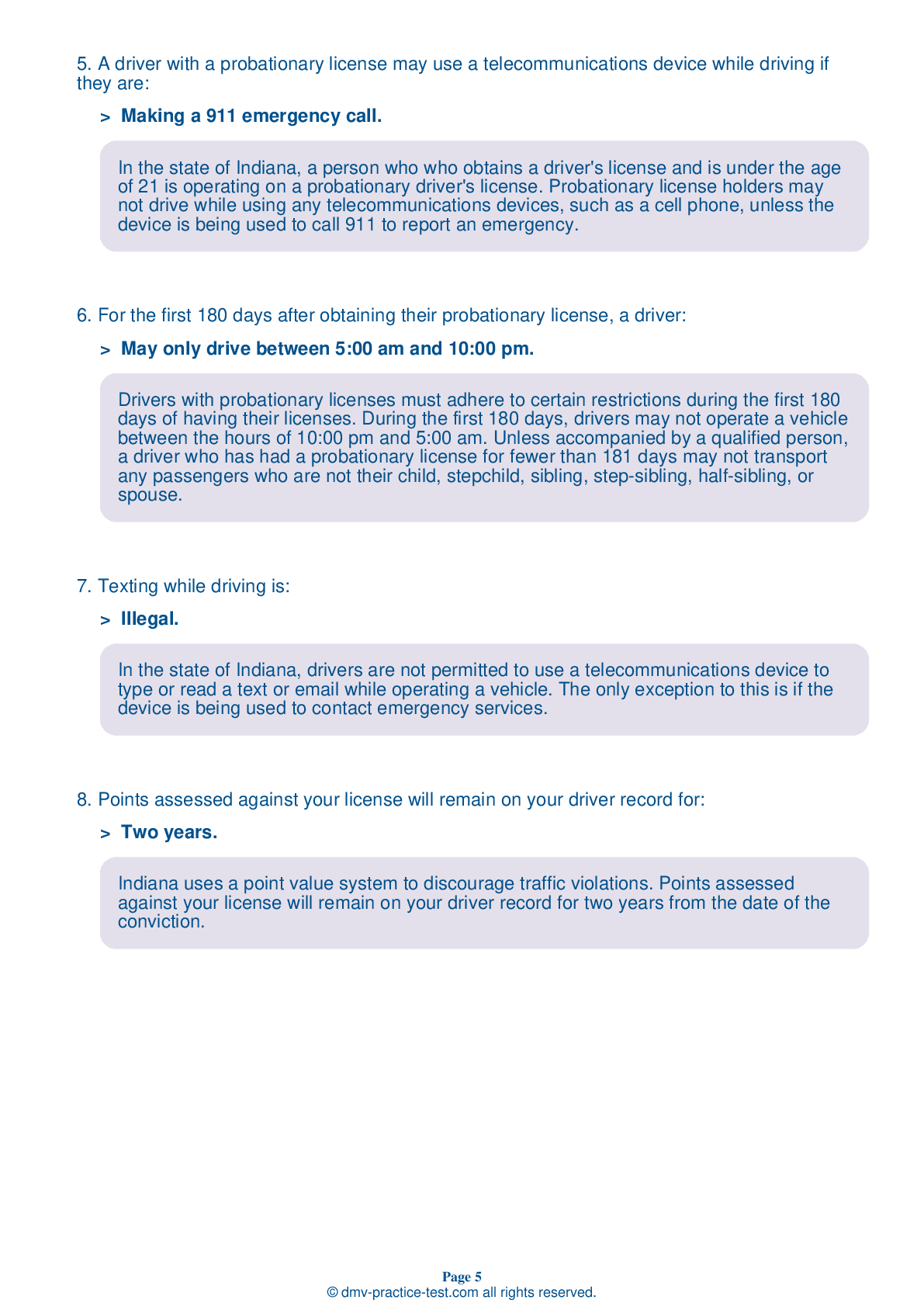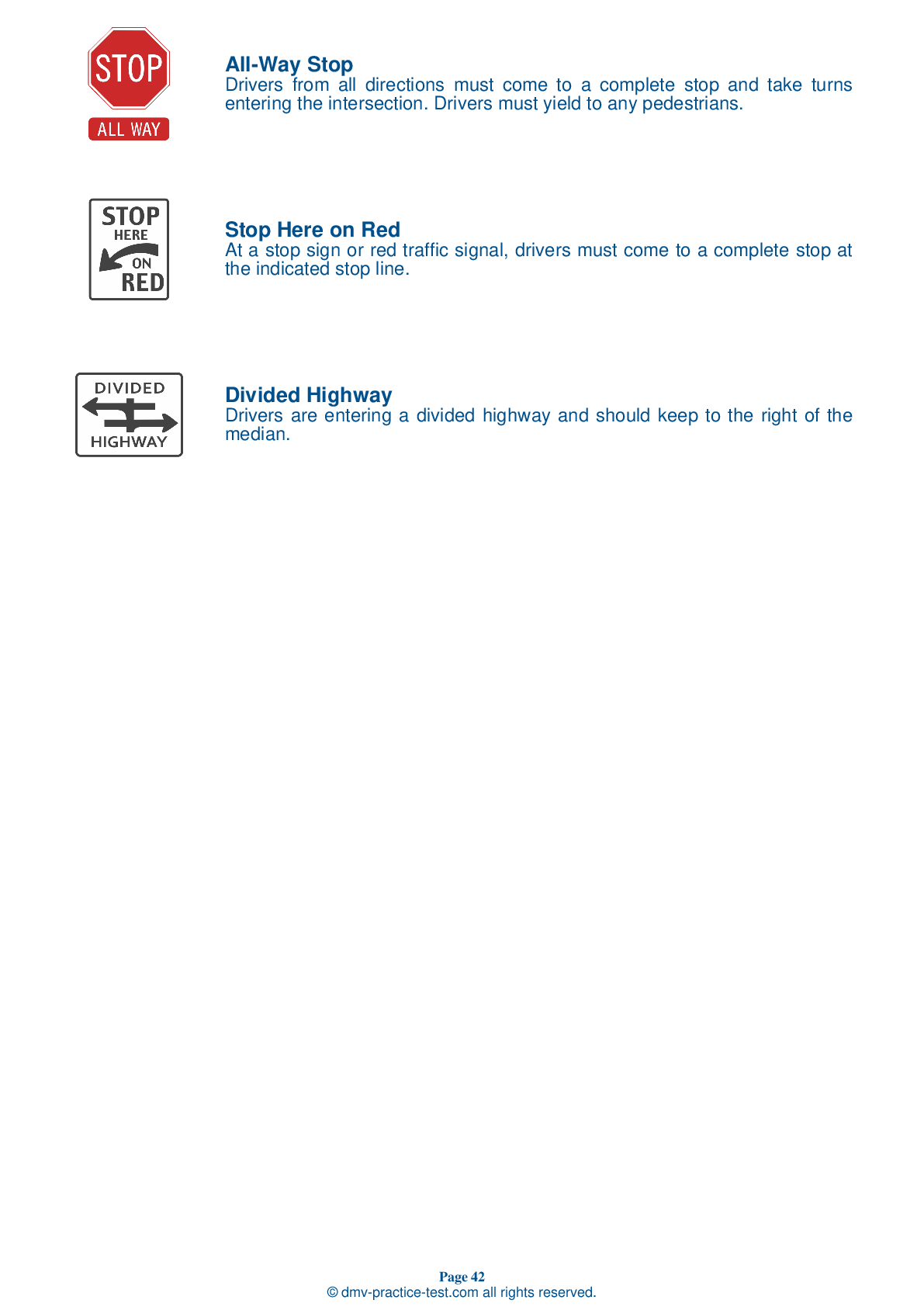FREE Indiana DMV Practice Test #6 Page 4 of 5
This set of Indiana DMV practise tests has been updated for January 2025. It includes questions based on the Indiana Driver Handbook's most significant traffic signals and laws for 2025. Use actual questions that are very similar (often identical!) to the DMV driving permit test and driver's licence exam to study for the DMV driving permit test and driver's licence exam.
On the practise exam, each question gets a tip and explanation to help you remember the concepts. The written component of the official Indiana DMV test will include questions about traffic rules, traffic signs, and driving statutes, as well as information from the Driver Handbook.
To obtain a passing grade, you must correctly answer 44 of the 50 questions. Take our DMV practise exam to help you prepare for your Indiana instruction permit or driver's licence.
The DMV exam is available in several languages.
Using any kind of testing assistance will result in an automatic fail, and the DMV may take additional action against your driver's licence, so stay away from it.
28 . This sign means:
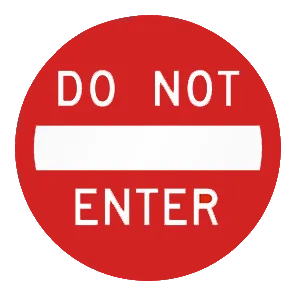
This sign is placed at the beginning of one-way streets and ramps to indicate that you must not continue driving in your current direction.
29 . When stopped for a traffic violation or at an equipment check, the driver must produce:
When stopped for a traffic violation or at an equipment check, the driver is responsible for producing their license, proof of registration, and proof of insurance. Drivers are required to have all three of these documents in a vehicle when it is being driven.
30 . What does this road sign mean?

A stop sign means that you must come to a full stop and yield the right-of-way to vehicles and pedestrians in or heading toward the intersection. Go again when it is safe.
31 . These signs indicate:

Warning signs prepare drivers for upcoming road conditions and hazards and are usually yellow with black markings. These signs are object markers and warn drivers about objects or areas that may be hazardous and should be avoided.
32 . This sign means:
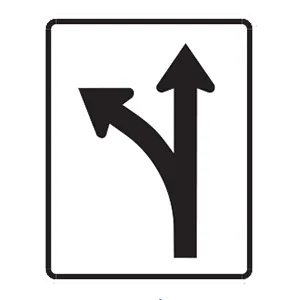
Regulation signs regulate traffic speed and movement, displaying rules which drivers must obey. This regulation sign tells drivers that they may either turn left or continue to drive straight at an intersection from the indicated lane.
33 . Roads freeze quickly when they are:
In cold or wet weather, you should take special care on sections of road that are shaded by trees or buildings. These areas freeze more quickly than the rest of the road and are the last parts of the road to dry.
34 . The most common color of warning signs is:
Most warning signs are diamond-shaped and yellow with black markings. These signs warn drivers about unexpected conditions that may not be readily apparent.
35 . You may drive across a dashed white line:
Traffic lanes moving in the same direction are separated by broken white lines. You may cross over dashed lines to pass, if it is safe to do so.
36 . When dealing with pedestrians, a driver must:
You must do everything you can to prevent striking a pedestrian or another vehicle, regardless of the circumstances. It is the driver’s basic responsibility to be alert to pedestrians and to yield the right-of-way to all pedestrians, even if the pedestrian is crossing the street where they should not be.
37 . This road sign means:
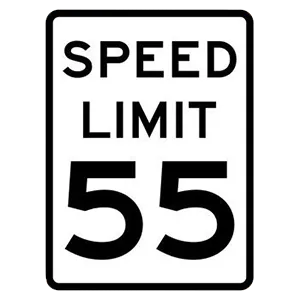
This is a speed limit sign. It indicates the maximum legal speed that you may drive on the road where it is posted. At times of rain, snow, ice, or other less-than-ideal conditions, you may have to drive more slowly than the posted limit.
38 . When you hear a fire engine siren behind you, you must:
When you hear the siren of an emergency vehicle, you must pull over to the curb or side of the road and stop.
Need Car Insurance? No problem!
Compare the best rates in Indiana and find a personalized policy that meets your needs.
1. Are You Currently insured ?
2. Married ?
3. Do you own your Home?
4. Do you have more than 1 car ?
5. Have you or a Family Member Honorably Served in U.S. Military ?
6. Your Name
7. Age
8. Zip code
IMPORTANT REMINDER:Auto Insurance is Mandatory to drive in Indiana. Get covered before you hit the road to avoid any fines.
Ranked by best match
